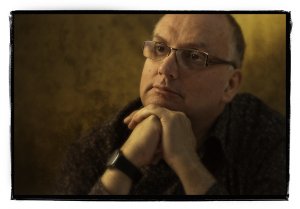Presented By: Nam Center for Korean Studies
SMTD Department of Musicology Distinguished Lecture | Interpretations at Home and Abroad: Iconographical Depictions of the Soundworld of a Korean Martial Processional
Keith Howard, Professor, SOAS

The martial processional, Taech’wit’a, is preserved in South Korea through the maintenance of a limited and formulaic repertoire as Intangible Cultural Property 46. The revival of recent decades masks a break in performance at the beginning of the 20th century and a troubled initial redevelopment under Japanese colonial control. To do so, the identity enshrined in the Property designation, and the musical soundworld, has been reliant on iconography. But, the earliest iconographic representation Koreans have identified is in a 1600-year-old tomb on territory then home to a Chinese commandery, while some of the most elaborate depictions of martial music come down to us from Japanese sources. How are these sources interpreted to create something iconically Korean? This paper explores, for the first time, the procession of instruments in a previously unknown Japanese 12m-long hand scroll that has been attributed to Kanō Tōun Masunobu (1625-1694), the Chōsen shisetsu gyōretsu zukan, and the disguised musical activity in one of Hokusai’s (1760-1849) ‘100 Views of Mount Fuji’ woodblock prints. Neither depiction has to date been referenced by Korean musicologists. Both celebrate the extraordinary rather than the everyday: they date from a period when Korea’s relations with Japan were tightly controlled—over a 200-year period, Korea despatched just 10 envoys to Japan, each following a regular, seasonal path. The hand scroll juxtaposes Japanese samurai and Korean musicians, while the second, where, a decidedly secular party replaces any martial overtones, dispenses with formality. To the Japanese artists, difference was tempered by their knowledge of Japanese musical practice, while Korean scholars examining the existing iconography (including tomb paintings), bring difference into allignment with a Korea-centred history. Using these significant new resources, I explore how a specific martial music has travelled and transmigrated, and how it has been presented, re-presented, preserved and re-preserved.
Professor Keith Howard is currently a Fellow of the National Humanities Center in North Carolia. He iis Professor Emeritus at SOAS, University of London, where he was full-time Professor until September 2017. He was formerly Professor and Associate Dean at the University of Sydney, and has held visiting professorships at Monash University, Ewha Women’s University and Hankuk University of Foreign Studies. He has written or edited 20 books, including Korean Musical Instruments (1988 and 2015), SamulNori: Korean Percussion for a Contemporary World (2015), Music as Intangible Cultural Heritage: Policy, Ideology and Practice in the Preservation of East Asian Traditions (2012), Singing the Kyrgyz Manas (with Saparbek Kasmambetov, 2011), Korean Kayagum Sanjo: A Traditional Instrumental Genre (with Chaesuk Lee and Nicholas Casswell; 2008), Zimbabwean Mbira Music on an International Stage (with Chartwell Dutiro; 2007), and Korean Pop Music: Riding the Wave (2006). Over the last 30 years, he has published more than 150 academic articles and 190 book/music reviews, as well as writing for many newspapers and journals. From 2008 until 2017, he was editorial chair for the SOAS Musicology Series (Ashgate/Routledge). He sits on a number of editorial and advisory boards. He founded and managed the SOASIS CD and DVD series as well as OpenAir Radio, and has been a regular broadcaster on Korean affairs for BBC, ITV, Sky, NBC and others.
Professor Keith Howard is currently a Fellow of the National Humanities Center in North Carolia. He iis Professor Emeritus at SOAS, University of London, where he was full-time Professor until September 2017. He was formerly Professor and Associate Dean at the University of Sydney, and has held visiting professorships at Monash University, Ewha Women’s University and Hankuk University of Foreign Studies. He has written or edited 20 books, including Korean Musical Instruments (1988 and 2015), SamulNori: Korean Percussion for a Contemporary World (2015), Music as Intangible Cultural Heritage: Policy, Ideology and Practice in the Preservation of East Asian Traditions (2012), Singing the Kyrgyz Manas (with Saparbek Kasmambetov, 2011), Korean Kayagum Sanjo: A Traditional Instrumental Genre (with Chaesuk Lee and Nicholas Casswell; 2008), Zimbabwean Mbira Music on an International Stage (with Chartwell Dutiro; 2007), and Korean Pop Music: Riding the Wave (2006). Over the last 30 years, he has published more than 150 academic articles and 190 book/music reviews, as well as writing for many newspapers and journals. From 2008 until 2017, he was editorial chair for the SOAS Musicology Series (Ashgate/Routledge). He sits on a number of editorial and advisory boards. He founded and managed the SOASIS CD and DVD series as well as OpenAir Radio, and has been a regular broadcaster on Korean affairs for BBC, ITV, Sky, NBC and others.